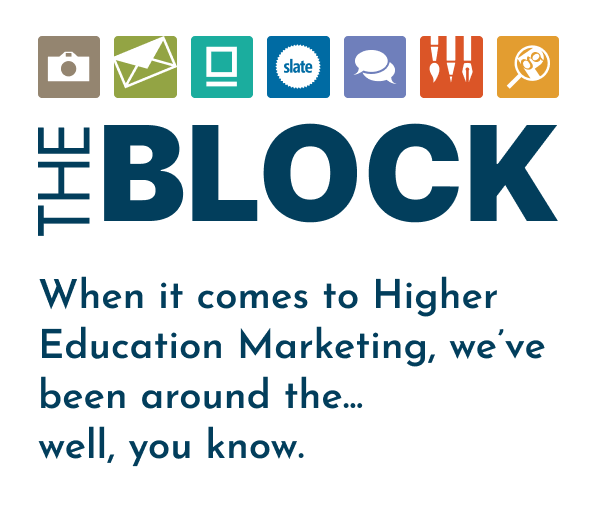
May 1 is a date that makes almost all enrollment professionals’ ears perk up. It can be a stressful time for admissions teams as they scramble to meet enrollment expectations and net tuition revenue targets.
Known as “National Candidate’s Reply Day,” May 1 was historically the deadline to confirm your enrollment at your selected institution.
Over the past decade, this hard deadline has softened into more of a benchmark for a majority of institutions. Many schools in the country will accept students on campus up until the first day of classes.
Why is that?
There are a multitude of reasons for why May 1 isn’t really May 1 anymore.
Let’s dive in.
The College Search Process Shifts Online
For starters, students have changed their college search process. We’re far beyond the ink-on-paper days leading the charge of the student outreach process.
While print is still a powerful tool to capture students’ (and parents’) attention, it is now a part of a larger communications mix.
Students are doing their own research, largely online, to make their decisions. With the large and various amounts information about colleges and universities available online, schools have less control over their image than in decades prior.
What was a curated image and brand via enrollment marketing now has to share space with social media platforms, college search engines like College Vine, and other venues that offer real-time reviews from former and current students about their true, honest experience at a school.
Both Gen Z (and younger Millennials) have had more information to mull over, which in turn can lengthen a student’s decision process.
Plus these generations don’t want to fit into a neat, preordained box. In their minds, this deadline could be another rule worth bending.
The Impact of Fewer Requirements
More recently, we’ve seen schools nix application requirements such as application fees and standardized test scores.
This dissolution of prior requirements gives students more wiggle room to make their decision. They aren’t worrying about receiving test scores by a certain date because they probably don’t need test scores to be admitted (depending on the school and its selectivity).
We’ve also seen a rise in direct admissions within the past 2-3 years. Partnering schools give companies like Niche the ability to automatically admit student users who meet the minimum requirement for that school’s admission, such as a certain GPA.
More College Applications Per Student
The number of colleges the average student applies to continues to grow. Common App reported that students now apply to an average of 5.7 schools (this data is limited to Common App-affiliated schools).
Though you can ask any teen in the midst of their college search journey, and they’ll tell you of people they know applying to upwards of 12 schools.
Platforms like College Data have reported an upward trend in students applying Early Decision to secure their spot, since the college application process has become so competitive.
With schools filling up their classes within the first months of the new year, May 1 doesn’t hold the weight it once did.
The Remaining Hardliners
Though there are still schools that adhere to this deadline.
Highly selective institutions still utilize May 1 as the be-all-end-all for shaping their classes. When you have upwards of 100k applicants, any barriers (such as deadlines) that help trim the fat are welcome.
The Common App reported that applicants to highly selective institutions increased by 32%. Meanwhile, admissions rates among these highly selective institutions have decreased. Even schools once considered ‘safety schools’ for those wishing to go to prestigious institutions have dwindling acceptance rates.
While the test-optional model may give students a false sense of confidence that they can successfully compete in the ivy league and highly selective realm, many will be rejected and have to look elsewhere for their final choice.
Shaping the Class
The truth is May 1 is not the deadline it once was.
It is now seen as a benchmark for schools to evaluate how their enrollment is doing, and many will operate on a “gain a few, lose a few” model all the way into August.
As well, it can be a time for schools to hone in on the shape and make-up of their class, trickling down into targeted marketing efforts following that date.
Looking to Boost Late-Cycle Enrollment Numbers?
Here are five actions to consider:
1. Incorporate more personalized communications.
Evaluate your yield strategies by introducing more personalized communication such as handwritten notes.
2. Pick up the phone!
Calling campaigns tend to be more successful towards the end of the cycle.
3. Consider offering last minute financial appeals.
With cost being a top concern for students and parents, financial incentives could sway a student to enroll.
4. Segment. Segment. Segment!
Create unique messaging for your prospect populations that speak to their interests, locations, and aspirations.
5. Don’t forget the parents.
Develop a robust strategy for engaging household influencers (aka the parents). Parent communications are essential.
A Partnership with TPG
If your institution’s looking for solutions with a committed firm, The Parish Group can help.
Our team of enrollment professionals has over 100 years of combined experience in the enrollment management and higher education marketing industry. We’ve helped schools of all shapes and sizes, public and private, HBCUs and PWIs.
Our proven partnering methods of research, data, custom creative designs, extraordinary service, and consulting have helped institutions achieve their best-fit classes for over 35 years.
Let’s chat.









